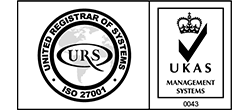
Cut Your Carbon Emissions – 17 Steps your Business can Take
Benefits of tackling climate change on your business
Taking the appropriate steps for your business to tackle climate change could be one of the most rewarding and socially advantageous things you can do as a business. Make your changes to cut carbon emissions and show other businesses in your area and industries that being green is not only possible but can be profitable.
Going through a process of analysis of your businesses methods, suppliers and equipment will reveal areas where you can make improvements. This is true any time, but specifically now when the leaders of climate action can demonstrate and share their success with existing and potential clients, putting your business, and those associated with you, at the forefront of the movement and a force for good change in the world.
A list of solid actions and examples you can take right now
We are not here to highlight the extent of climate change or to bang on about how the world as we know it will end if we keep using fossil fuels at the global rate it is today. We know that it is serious and we know we can do something about it. So here is a list of 17 steps you can take as a business to cut your carbon emissions and show your clients you are leading the way in climate action, some might not be appropriate to you or your business but you are guaranteed to find one or two things that will really make a big difference:
#1 – Introduce a cycle to work scheme
To reduce your impact on the environment could be as simple as helping your employees to make changes to how they work and travel. You can support your employees by introducing a cycle to work through a salary sacrifice scheme. This is better for your employees’ health and well-being and better for the planet. The scheme is a tax-efficient, salary-sacrifice employee benefit. You can also save on reduced National Insurance Contributions on the cost of cycle hire.
#2 – Insulate your buildings
Responsible for 9% of UK greenhouse gas emissions every year, non-domestic buildings that are not properly insulated are a contributing factor to the issue. Cut emissions and save on bills by insulating your windows, walls, doors, roof, chimneys and pipes which will result in reducing your overall energy consumption.
According to CDP data, you may be able to make the money you spend back in as little as a year, and on average most companies see payback in 4 years.
#3 – Minimise the waste from your products and packaging
Most production processes contribute to carbon emissions and are bad for the environment. If they cannot be reused or recycled, then incinerating or landfilling discarded plastics and other rubbish releases even more carbon and other harmful chemicals into the atmosphere.
Some things you can think about are reducing the amount of packaging you use, starting to use recycled materials, stopping to use single-use plastics, sourcing sustainable materials for your products and adding clear labelling on how to dispose of the packaging/product.
WRAP have tips and resources that can help you tackle this waste.
#4 – Switch to LED bulbs
Deliver cost savings of up to 80% for your business by upgrading from conventional lighting to LED bulbs. LED bulbs use less energy, last longer and reduce maintenance costs compared to standard bulbs. You can save more money by installing lighting controls that automatically switch or dim the lighting.
On average most companies see payback in under 3 years, according to CDP data. An easy-to-use source of information on energy-efficient products for buildings, The Energy Technology List, provides a list of verified efficient products, including lighting.
#5 – Adjust heating and cooling system timings, temperatures and rooms
A simple but effective step is to turn your heating down by just one degree, this could significantly lower your energy consumption and cut emissions.
It may seem trivial but even the smallest of tweaks can make a difference to your energy bills and help save the environment. For example, you could set your thermostat correctly rather than leave it as the factory settings. You can make sure systems are powered down when the building is not occupied, turn off air conditioning if windows are open, even keeping radiators free from obstructions can have an impact. For larger premises, you can install a Building Management System to control heating, ventilation and air conditioning.
#6 – Install a smart metre
Smart metres enable you to take control of your business’ energy use and costs – and put an end to estimated billing and manual metre reading. You can speak to your energy supplier directly to find out about having a smart metre installed at no additional cost.
#7 – Talk to your supply chain
Reducing your carbon emissions is going to have a favourable impact on your business and reflect well on the businesses you interact with. When you are looking for a new supplier factor in the environmental impact that business is having. Perhaps they are willing to reduce their carbon emissions for a better deal.
Why not try asking the businesses in your supply chain how they are reducing their emissions? It could prompt them to take action and may give you new ideas. Work together with your supply chain to find ways of reducing your collective emissions and have a more positive effect on your environment.
#8 – Electrify your vehicle fleet
Electric cars are becoming more popular and more affordable. Now that the charging infrastructure is beginning to catch up there will soon be no good reason to stick with fossil fuel-powered vehicles.
They can save you money and offer a superior driving experience, electric vehicles are a great way to reduce your business carbon emissions. There are tools available that can help you find government incentives for electric vehicles, savings on road tax and fuel and can help you decide which type of electric vehicle is right for your business needs and all importantly where your local charging points are.
#9 – Install renewable electricity or heating
To immediately reduce your impact on the environment switch from a gas boiler to a low carbon alternative, like a heat pump or solar thermal. You can generate your own renewable energy by installing solar panels, and you could even make money by selling excess electricity you produce back to the grid.
These types of renewable energy projects have higher upfront costs and you may need planning permission before starting work. If you are planning on remaining in your current premises for the next few years it will allow you to recoup the initial costs. Solar PV is the most common type of installation, which on average takes businesses between 4 and 10 years to recover costs.
#10 – Calculate the energy and carbon footprint of your own products and services
Increasingly people want to know the carbon and energy footprint of the services and products they buy and use. This is where carbon footprinting comes in; Product Carbon Footprinting (PCF) is the most established method for determining the climate impact of a product or service throughout its entire life cycle. It is important to do this properly, particularly if you are using it in tenders.
You can better understand the impact of cloud sustainability on your emissions by using specialised calculators, such as Microsoft’s Sustainability Calculator and the Machine Learning CO2 Impact Calculator.
Carbon footprinting for beginners – UK Gov Department for Business, Innovation and Skills
#11 – Offset the carbon you can’t reduce
Unfortunately offsetting your carbon doesn’t reduce your carbon emissions but it can at least go some way to helping tackle climate change in the short term whilst you take the steps needed to cut your impact on the environment.
Consider paying another organisation to help avoid, reduce or capture carbon elsewhere through methods like tree planting or renewable energy projects. As well as reducing net emissions, these projects can have other benefits, like increasing biodiversity.
#12 – Work smart
A global pandemic has forced businesses to rethink flexible working and working from home, as we all find ways to deal with the difficult situation, a glimmer of positivity has emerged in the form of working smarter and more productively in remote capacities.
Going forward many positions can now be considered completely remote, reducing the amount of office space and carbon usage that is required for a working day. You can employ tools that will help manage remote workers, for example using a secure VPN, and remote server access and cloud-based collaboration solutions.
IQ in IT Cloud Managed Services
#13 – Revise data storage
Many services are turning to the cloud for operational efficiency, but there is also a great bonus to the effect this has on climate change. It could be argued that large cloud providers are generally more energy-efficient than traditional data centres thanks to equipment efficiency and a higher utilisation of renewable energy.
Moving to cloud data storage could globally eliminate a billion tonnes of CO2 over the next four years (according to Consultants IDC). The steps you can consider regarding your data and cloud usage could be to move from on-premise servers to cloud servers, delete data that is no longer required, minimise costs and space and use scalable infrastructure and load balancing virtual machines that use less energy due to the management of resources.
Tech for Net Zero Resource Hub
#14 – Programme with energy efficiency in mind
You can get very granular about the steps you take to cut your carbon emissions. One aspect you can look at if you implement any code or programme your own software, or even have any influence over companies of software that you use, is to make changes to how the programme is designed or check with suppliers of software to see if they implement a code review process and actively refactor their code to optimise it.
It can actually make a big difference in energy use depending on how the software is designed. Factor in code that uses twice as much memory, which could be optimised and halved by using different functions or frameworks, then apply that to software that is running on millions of computers globally and you can start to see the amplified effect. Just a small change in the code can have a real impact.
#15 – Think about what you buy
How you source the products and services you use as a business can play a key part in reducing your carbon emissions. Consider using equipment that is more energy-efficient, like newer computers and printers, or investing in repurposed or refurbished equipment that doesn’t put a strain on the global supplies for tech. Think about the most appropriate tech for your requirements, you may not need such powerful computers where a tablet might be more efficient.
As a business, you have buying power and influence in the markets. Choosing more green options when it comes to what you purchase.
#16 – Buy local where you can
Support the local economy and community by stocking or buying products that are made close to home. Locally made products can be lower carbon as they do not need to travel as far to reach you.
Things you could consider when choosing to buy locally are searching for small, local producers that you can collaborate with by using online search, social media networks, local markets and chambers of commerce for more information. Consider how you could source locally for anything else you need, e.g. shop or site fittings, furniture, packaging, repair services, marketing help.
#17 – Lengthen product lifespan with repairs and returns
Extending the lifespan of products can reduce your overall carbon emissions by removing the demand for new products and therefore the need to manufacture more. By decreasing the number of things being produced decreases the amount of carbon being produced in that process.
Some things you can consider in this area of carbon-cutting are to offer or promote repair services to increase the lifespan of your products or give customers advice and instructions on how to repair items themselves. You can share product care tips on how often they need to be serviced or other ways to maintain products. You can offer a returns scheme for unwanted items in exchange for vouchers or credit and then refurbish or repurpose them for resale. You could even hold community swap shops or be a collection point for items that are no longer wanted.
Conclusion
It is possible to make a real difference to your carbon emissions and reduce the amount of CO2 your business contributes to the global issue of climate change. Take action now on even just one of these steps and you can feel good about doing your part. Encourage those around you and other businesses you interact with to take similar steps and we can be rewarded with more than just saving the planet but financially and socially too.

















Recent Comments